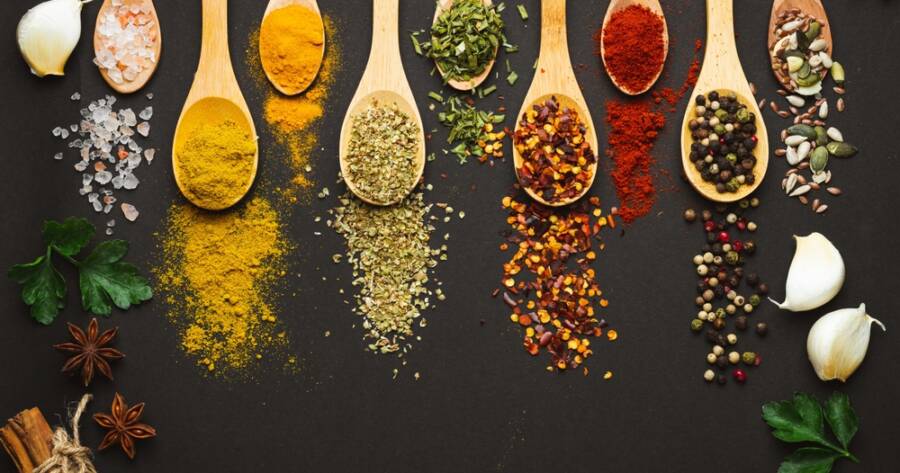Spices have been integral to culinary traditions across the globe, each carrying its own rich history and cultural significance. From the vibrant markets of India to the aromatic kitchens of the Middle East, spices tell tales of trade, exploration, and creativity. Understanding the cultural stories behind these fascinating ingredients adds depth to cooking and appreciation for diverse culinary practices. By delving into the heritage of popular spices, we uncover how they shaped both cuisine and culture.
Cinnamon: The Fragrant Legacy
Cinnamon, once considered more precious than gold, has been a staple in culinary and medicinal practices for thousands of years. Originating from Sri Lanka, ancient traders kept its source a secret to maintain its allure and demand. Used in Egyptian embalming rituals and Roman feasts, cinnamon’s rich aroma has spiced both cuisine and history.
Today, cinnamon’s warm, sweet notes feature in both sweet and savory dishes worldwide. Its allure transcends mere seasoning, embodying a legacy of trade, mystery, and celebration. This fragrant bark has symbolized luxury and connection across continents, enriching meals and cultural ceremonies alike.
Saffron: Threads of Gold
Saffron, known as the “sunshine spice,” is famed for both its golden hue and delicate flavor. Cultivated primarily in Iran and Spain, saffron’s labor-intensive harvesting process contributes to its reputation as the world’s most expensive spice. Each stigma must be handpicked and carefully dried, creating a precious culinary treasure.
Historically, saffron colored and flavored Royal Persian dishes and was revered for its medicinal properties. Today, it features in iconic dishes like Spanish paella and Indian biryani, gracing them with an exotic touch. Saffron’s story intertwines culture, luxury, and the careful artistry of its cultivation.
Turmeric: The Golden Elixir
Turmeric is celebrated for its vibrant color and potential health benefits, often dubbed a “superfood” in Western contexts. For centuries, it has been a cornerstone of Ayurvedic medicine and Indian culinary traditions. Known as “haldi,” turmeric plays a central role in ceremonies and rituals, symbolizing purity and prosperity.
Its earthy flavor enriches curries and stews, with curcumin widely studied for its anti-inflammatory properties. Globally, turmeric’s golden glow and healing qualities resonate with those seeking holistic well-being. This ancient spice links the past to present aspirations, representing cultural healing and culinary delight.
Vanilla: The Aromatic Jewel
Vanilla, an aromatic spice with roots in Mexico, was revered by the Aztecs, flavoring their “xocolatl” drink. A symbol of opulence, its cultivation spread across the globe, demanding meticulous pollination processes. Today, Madagascar and Tahiti are renowned for producing this delicate, labor-intensive spice.
The unmistakable scent of vanilla graces desserts, beverages, and even perfumes, evoking comfort and nostalgia. Its history weaves a tale of exploration, adaptation, and indulgence, capturing the imagination and taste buds across cultures. Vanilla continues to be an enduring symbol of sweetness and sophistication.
Cardamom: The Queen of Spices
Cardamom, with its complex aroma of eucalyptus and citrus, is a staple in Middle Eastern, Indian, and Scandinavian cuisines. Referred to as the “queen of spices,” it has been traded since ancient times, finding its way into both sweet and savory dishes.
Cardamom’s versatility lends itself to chai in India, baklava in the Middle East, and festive treats in Scandinavia. Embodying luxury and wellness, it bridges diverse culinary traditions and continues to enchant the palate with its exotic profile. Its presence reveals a historical narrative of trade, tradition, and culinary harmony.
Pepper: The Spice That Changed the World
Pepper, often referred to as the pioneering spice, led explorers on new routes and shaped global trade. Native to India’s Malabar Coast, it became a symbol of wealth and power during the spice trade era, influencing diets worldwide.
Known as “black gold,” pepper’s bold piquancy enhances countless dishes, from Italian pasta to Asian stir-fries. Its transformative history illustrates a tale of exploration, desire, and universality, as it became a household staple across continents. Pepper represents both culinary revolution and cultural synthesis.
Ginger: A Root with Rich Tales
Ginger’s pungent yet warming qualities have made it a key ingredient in both culinary and medicinal practices globally. Originating from Southeast Asia, its zesty flavor pairs perfectly with both sweet and savory recipes, from Chinese ginger chicken to British gingerbread.
Beyond the kitchen, ginger is praised for its digestive and anti-inflammatory properties. Cultural expressions of hospitality and healing are evidenced in ginger’s continued use, linking traditions with modern appreciation. Its rich taste captures both the vibrant zest and gentle warmth of diverse cultural heritages.
Learn More Today!
The stories behind popular spices offer a tantalizing glimpse into the histories, traditions, and cuisines of cultures worldwide. From cinnamon’s fragrant legacy to ginger’s healing warmth, these ingredients symbolize exploration, connection, and creativity.
Embracing their rich narratives enhances culinary experiences, inviting discovery and appreciation for the intricate symphony they create. These stories celebrate the shared culinary heritage that unites people globally, transforming kitchens into places of cultural exploration and enrichment.

